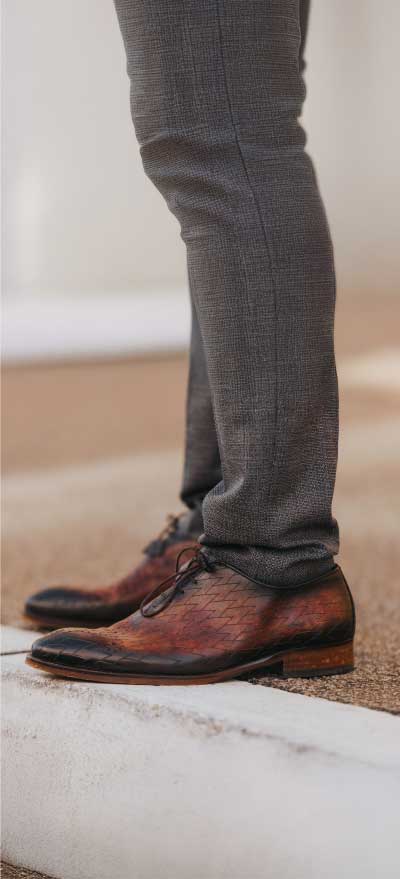The World of Fashion Dropshipping: Your Guide for Bulk Clothing Suppliers
The world of fashion is ever-evolving, and now, a game-changing business model has emerged for entrepreneurs wishing to venture into the clothing industry – dropshipping. Businesses of all sizes are cashing in on it; from small boutiques to large-scale enterprises, dropshipping is rapidly becoming popular. Although this concept has been around for decades, until recently, there was low awareness, so few had knowledge about running a successful dropshipping operation.
We are providing an overview of the basics surrounding dropshipping within the clothing industry: benefits, risks, and how to find reliable suppliers that suit your needs. Moreover, additional tips can be gathered regarding streamlining your process and overall advice for editor newcomers entering the fashion dropshipping arena, including suggestions from experts in this trade.
The World of Fashion Dropshipping: Your Guide for Bulk Clothing Suppliers
Are you interested in launching a fashion dropshipping business? If so, there are many aspects to consider before taking the plunge. Although it may not be clear to those unfamiliar with this business model, a dropshipping venture is not an easy task; it requires dedication and consistent attention. Ensuring success will involve gaining knowledge of fashion trends, creating an effective marketing plan, and guaranteeing customer satisfaction through quality merchandise. Let's discuss the basics of dropshipping to jumpstart your venture.
What Is Dropshipping and How Does It Work?
Dropshipping is an effective and lucrative business model. Instead of physically stocking and managing inventory, you purchase clothes from a bulk supplier and directly dispatch them to your customers upon sale. Not needing to handle large amounts of stock enables cost savings that would normally be incurred with conventional retail models.
In other words, Dropshipping is a revolutionary retail fulfillment method that breaks down traditional barriers. This process involves sellers listing products on their website without keeping an inventory – making financial sense and empowering small businesses with the operational flexibility to manage and scale. When an order is received from a customer, the seller purchases the product from a third-party supplier, who then directly ships it to its intended destination. The seller then acts as a middleman between supplier and customer with minimal financial commitment or regarding physical product stock, taking phases of transition away.
Pros and Cons of Dropshipping for Clothing
Making business decisions, such as launching a business, can seem uncertain and require expert navigation. However, learning the advantages and disadvantages of dropshipping offers great help. If you're considering starting a business through dropshipping, then knowing what comes with that investment is key. Let's uncover some of the most commonly seen pros and cons of the practice of dropshipping.
Pros:
Low-Cost Start-Up Investment:
Dropshipping is a great business opportunity that requires minimal investment. Instead of investing in stocking up on products and managing them, you can instead skip these costs altogether. Without renting out warehouse space or purchasing stock upfront, you can save money immediately. This almost completely removes the difficult steps normally associated with starting a business, paving the way for you to get off the ground and start making a financial return immediately.
Wide Product Variety:
You can offer a diverse range of clothing items without the burden of holding inventory. This means you can add more products or remove them without actually having to manage physical stock. As such, dropshipping for clothing gives you the flexibility to easily test different items without major risks and allows you to tap into a diverse range of suppliers that could offer greater product variety than you'd have if stocking items yourself.
Scalable:
Dropshipping unlocks the door to unlimited potential for businesses looking to grow. Its scalability enables entrepreneurs to increase their product catalog and easily reach a wider audience. Without having any restrictions on the number of items stocked, business owners have full control when making decisions about their product selection. Therefore, dropshipping is attractive for entrepreneurs who want to rapidly expand and maximize their customer base.
Location Independence:
Run your business from anywhere with an internet connection, as dropshipping is not dependent on geographical location. Without worrying about the associated costs of managing stock from a physical location, you can target a wider range of customers without worrying that your inventory will be too far away to make shipments in time. Additionally, many e-commerce platforms allow users to ship worldwide with ease, and dropshipping makes this even more achievable.
Lower Costs:
The major advantage of dropshipping is its cost efficiency. Without having to invest in stock and associated costs such as warehousing or packaging, entrepreneurs can significantly reduce their overhead expenses compared to traditional retailing methods. This lower investment means businesses can focus more resources on marketing efforts and customer service, resulting in a better overall customer experience.
Cons:
Shipping Delays:
When dropshipping, orders can take a while to ship out, and this is typically attributed to how suppliers must first receive and process them. This inevitably results in delayed deliveries that are unsatisfactory for customers. As there is no reliability concerning delivery time and precision, problems can arise from managing customer expectations accurately. Consequently, delays can cause great irritation among consumers inaccurately gauging the launch time of goods.
Thin Profit Margins:
Competition in the clothing industry can lead to lower profit margins due to the large number of resellers and suppliers. This is especially true when it comes to dropshipping since entrepreneurs are not able to negotiate prices with suppliers and end up paying pre-determined rates for goods. As a result, profits can be greatly reduced if orders do not offer substantial margins.
Inventory Issues:
You have limited control over stock levels and may face occasional out-of-stock items. This can be an issue because you are unable to manage inventory levels effectively and may end up feeling frustrated when orders cannot be fulfilled. These issues can also arise due to technical errors, such as suppliers not updating their stock levels accurately, which could lead to overselling.
Brand Control:
Branding and customization options can be limited when relying on suppliers. This could be an issue for entrepreneurs who want to differentiate themselves with unique packaging, merchandise, and other customization options. Therefore, it is important to factor in such considerations when assessing supplier relationships and ensure their product can fit into your brand identity seamlessly.
Ultimately, dropshipping has pros and cons that must be considered before starting a business. While it offers a low-cost way to enter the e-commerce sector, entrepreneurs must be aware of the risks associated with this retail model and plan ahead accordingly. With some careful planning and research, dropshipping can be a great opportunity to build a successful e-commerce business.
Finding Reliable Dropshipping Clothing Suppliers
Your dropshipping venture's success is contingent on how well you select a clothing supplier to partner with. The right selection can mean the difference between huge success or eventual failure. But how do you go about even starting to work out who would make trustworthy partners? Here's how: the most important and useful steps to look for reliable clothing suppliers:
#1: Research Extensively:
With so many possibilities, it can be hard for entrepreneurs to pick the right supplier. Using trusted online directories, industry forums, and marketplaces such as AliExpress, SaleHoo, or Oberlo is a great way of narrowing down potential partners. The most important factor to consider when searching these sites is that they should provide verified contact information – something that's non-negotiable when evaluating a partner. Additionally, reviews and feedback from other entrepreneurs on these sites are crucial in helping identify reliable supplier options.
#2: Check Reviews:
Look for reviews and ratings from other dropshippers who have worked with the supplier. This will give you insights into their reputation and reliability. You can also check if the supplier is listed in industry associations and accreditations, such as the Textile Industry Suppliers Association (TISA).
#3: Contact Multiple Suppliers:
Waiting around for the perfect supplier rarely pays off. To ensure you get the best terms, pricing, and product quality for your business, consider contacting several potential suppliers. This strategy enables you to efficiently compare different suppliers without overpaying. It also gives you a chance to assess each supplier's reputation before entering into a commitment. If you have any reservations about one of them, it never hurts to ask about their order processing times, return policies, and any potential fees associated with dropshipping.
#4: Order Samples:
Consider ordering a sample of clothing items to evaluate their quality and shipping times firsthand. This will help you determine the potential of a particular supplier and provide real-life experience that makes it easier to make an informed decision. Keep in mind that the sample may not always reflect what would be sent out to your customers, so it's important to ask for clarification before committing to anything.
#5: Verify Legitimacy:
Ensure the supplier is a legitimate business by checking their registration and certifications. Most suppliers will provide you with a copy of their certificate to verify that they are a legal entity. You can also request proof of business, such as bank statements or tax returns, to ensure the supplier is financially solvent and trustworthy.
#6: Negotiate Terms:
Now that you've solidified your selection of suppliers, it's time to get down to the nitty-gritty details of establishing a mutually beneficial agreement. Negotiating for the perfect payment methods and shipping timeline is critical to crafting a strong contract. Plus, don't forget to ensure other significant clauses are included too. Put your skills to the test and ensure you're present throughout the negotiation process in getting the best deal possible for your business—it'll prove itself incredibly helpful for sustaining excellent operational integrity now and into the future.
Finally, keep in mind that dropshipping can be a great way to grow your online business without investing too much capital. All it takes is a bit of research, an understanding of the process, and some good old-fashioned negotiation skills to get the ball rolling.
Streamlining Your Dropshipping Business
The dropshipping world is cutthroat, and success requires optimizing small details to ensure efficiency. Therefore, finding strategies to streamline your operations is essential to remaining competitive. Here are a few tips that can help you get there:
-
Automate Processes: Use e-commerce tools and software to automate order processing, inventory management, and customer communication.
-
Optimize Product Listings: Create compelling product descriptions and high-quality images to entice potential buyers.
-
Implement SEO Strategies: Optimize your website for search engines to improve visibility and attract organic traffic.
-
Offer Exceptional Customer Service: Quickly respond to customer inquiries and promptly address any issues.
-
Monitor Trends: Stay updated with fashion trends and adjust your product offerings accordingly.
-
Diversify Marketing Channels: Explore various marketing channels, including social media, email marketing, and pay-per-click advertising.
-
Track Metrics: Analyze key performance indicators (KPIs) to measure the success of your marketing campaigns and overall business.
Final Tips for Any Dropshipping Newcomer
As you embark on your journey into the world of fashion dropshipping, keep these essential tips in mind:
Stay Informed: Continuously educate yourself about the clothing industry, e-commerce trends, and marketing strategies.
Customer Feedback: Pay attention to customer feedback and reviews to make improvements and build trust.
Legal Compliance: Familiarize yourself with the legal requirements for online businesses in your region, including taxes and permits.
Adapt and Evolve: Be prepared to adapt to changing market conditions and consumer preferences.
Patience and Persistence: Success in dropshipping takes time and effort. Stay persistent and learn from your experiences.
Build a Brand: If possible, work on building a strong brand identity to stand out in the crowded fashion market.
In a Nutshell
In conclusion, dropshipping is an efficient way to launch your online clothing business. No startup capital and no inventory are needed. You can be up and running quickly with an extensive selection of clothing and accessories offered at low costs. Understanding the basics of dropshipping and researching and finding reliable suppliers will help you get started in the right direction. Streamlining your business and investing the necessary resources into marketing campaigns will significantly increase your potential for success.
As a newcomer, don't forget to take the time for yourself to thoroughly assess the process to keep a keen eye on what works best for you! Remember these tips when navigating the world of fashion dropshipping while striving to build your online store for maximum profits! Take that first step today by reading through Dropshipping for Clothing Suppliers: A Complete Guide, and start looking for wholesale clothing suppliers near you today!








































